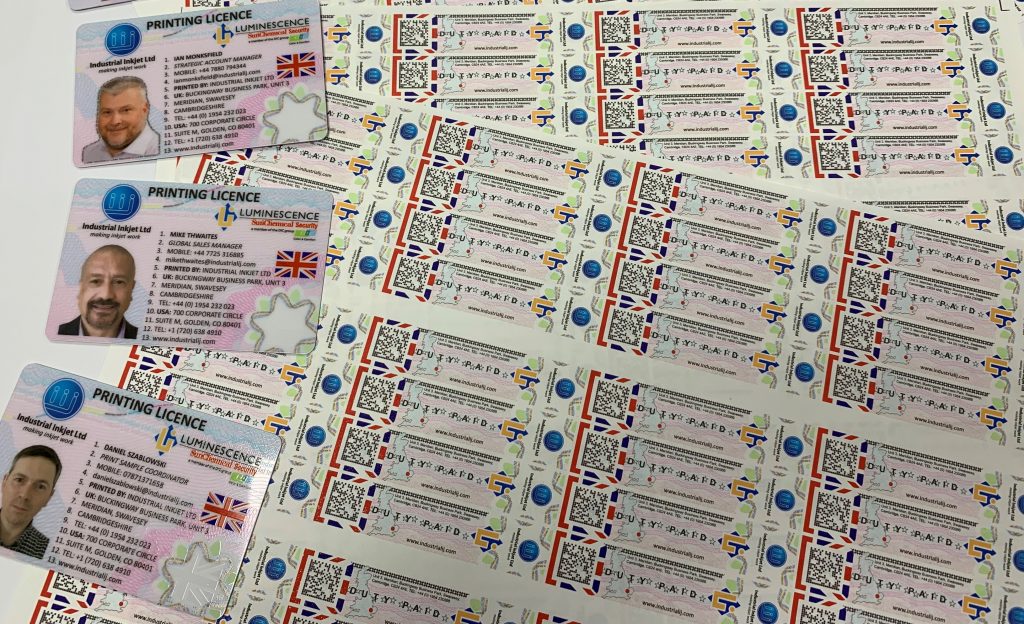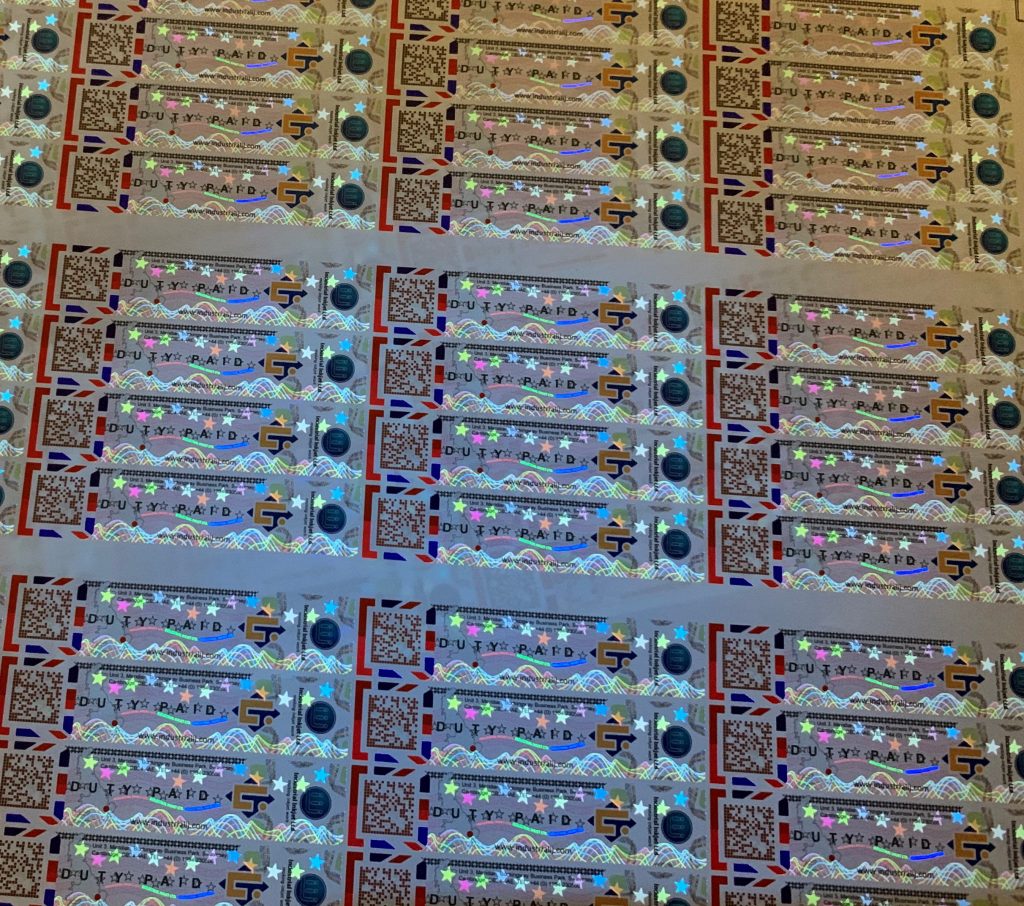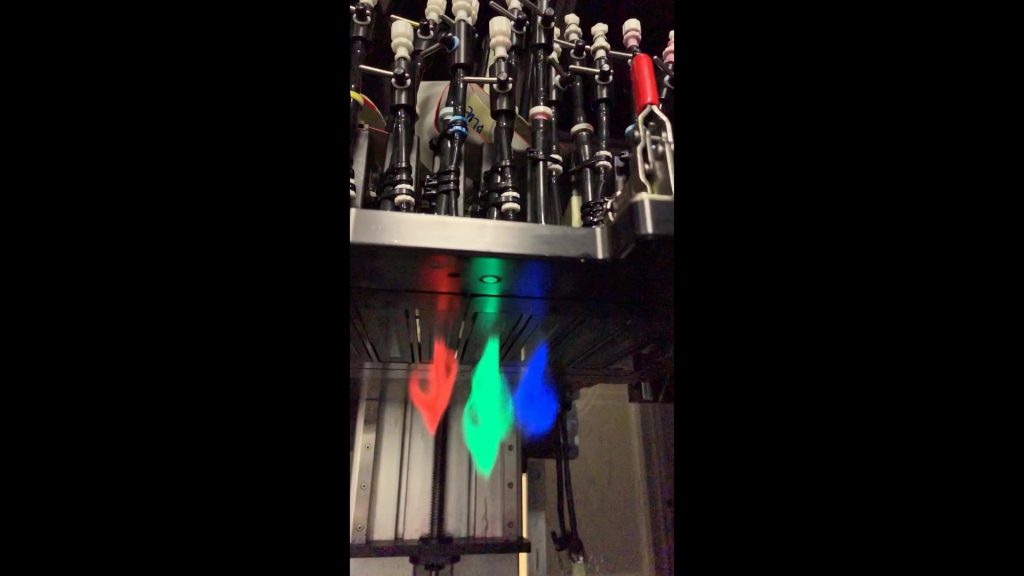The worlds of security print and packaging are in danger of colliding, but will this be a catastrophe
or a fresh beginning asks John Corrall, managing director at Industrial Inkjet (IIJ).
Wikipedia defines security printing as the prevention of forgery, tampering or counterfeiting, but how does this affect the packaging industry? The answer is two-fold: regulatory requirements and brand protection.
The requirement to add a ‘best before date’ to packaging has been around for more than 30 years, so there is a long history of adding information to meet regulations. It is debateable whether adding a simple date code counts as ‘security’ though – since it is designed to be readable by everyone. A better example would be the need to add track-and-trace information
for pharmaceutical products. Here there is a need to add a unique identifier to each blister foil that allows it to be traced right back through the distribution chain to the exact point of manufacture.
The regulations apply to the final product – be that foil, bottle, vial or ampoule, but also to the individual packet, the bulk carton and the pallet they shipped on. Each stage of the packaging needs specific and secure variable information added to it. Generally although the printed information is encoded to make it hard to fake data, the print itself is not hidden in any way.
 Tax stamps under normal light
Tax stamps under normal light
Tax stamps for tobacco and alcohol increase the level of security more by requiring that the print includes a simple covert code, perhaps
printed with an invisible ink such as a UVfluorescent.
The majority of the variable print on the stamp is visible, but the inclusion of a variable covert code adds an extra degree of protection.
So far the regulatory demands for packaging printing are relatively easy to meet using inkjet technology, which implies that fraudsters won’t take too long to copy it. In response to such fraud, the regulations will gradually be
tightened to demand more layers of security such as micro-text, tamper-proof inks, multicoloured UV fluorescent inks, IR readable inks, or IR up-converting and down-converting inks.
The good news is that the ID printing industry – passports, driving licences – already has this technology and repurposing it for packaging is not out of the question; the main change is adapting to the higher speeds needed in
packaging lines.
An interesting new regulatory requirement is Russia’s rule that a unique barcode must be added to every dairy product. The barcode data itself must be purchased from the state in what is essentially a new form of taxation. The main challenge is obviously the scale of the operation – these are the ultimate FMCG items.
 Tax stamps under UV light where the fluorescent print is visible
Tax stamps under UV light where the fluorescent print is visible
Taking milk cartons as an example, the new barcode will need to be added between offset printing of the milk carton, and creasing and cutting.
So far there is no demand for covert inks, but this may come in time. When regulations demand it, the packaging producer has no alternative than to invest in suitable print technology.
Brand production Brand protection is another area where the world of security printing is intruding into packaging production, but here the economic case comes to the fore.
In brand protection, the obvious goal is that the security element can be used to prove that the product is legitimate. However this may not always be the prime driver. A very common reason to add it is to ensure that a genuine product ends up in the right country. An invisible traceable code might be added to a product by a producer who operates a different price scheme in different countries. The goal is to ensure that the distribution network is not cheating by shipping products from their destination country to one where the product can demand a higher price.
Because this protection is not driven by government regulations, then the cost of the system becomes far more important. In the past it was generally applied only to high value products such as computers, software, mobile
phones or perfume. Recently however, the garment industry is waking up to the need. It is reported that worldwide 10% of such goods may be fake, with the cost of counterfeiting in the garment industry estimated at $1.2 trillion.
 RGB fluorescent ink
RGB fluorescent inkWhile this figure would pay for a reasonable number of covert inkjet printers, it is important to remember that the print equipment cost is
a small part of the whole. To work out where a fake product entered the chain may require an entire track-and-trace system, monitoring every
step from the factory to the customer, with the print being scanned, recorded and reported throughout. Our experience is that it is the
realisation of the extent of this system, rather than the cost of print equipment or covert ink, that usually kills many proposed projects.
A less common third reason to add security print to packaging is gamification. A unique barcode is added to your breakfast juice carton.
Scan it with your mobile phone and you can win a cash prize. This application is about promotion rather than brand protection. For the
brand owner, it is a less costly exercise since there is no need for a track-and-trace system.
A single website provides verification of the barcode data and issues the prize. This example serves very well to explain a change in mindset that is
required of any packaging producer starting to offer security print features.
When IIJ first installed such a system in 2016, it took quite some time to
explain to the manufacturer that each printed carton now had real potential value. It is no longer acceptable that an operator can walk off with a waste carton, or indeed that scrap or reject products can be disposed of without first scanning the code and cancelling it from the database. What was previously an open factory floor now needed segregating as the addition of printed security features adds value to the packaging –
sometimes significant value.
The technology to do far more than simple barcodes exists and is in use in
other industries.
Governments are gradually increasing regulatory demands and brand owners are keen to prevent fraud and protect their margins. Security printing and packaging are on a collision course but the impact is manageable.